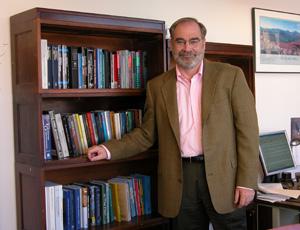Profiles
- Contact: Website Administrator
- 11/1/2004
Donna Roberts

Sanitary and phytosanitary (SPS) regulations moved to the fore of trade policy debates in the 1990s as a result of a 1995 World Trade Organization (WTO) agreement that set out new science-based rules to dissuade countries from using animal, plant, or human health measures as barriers to trade. Compliance with these new rules required changes to a number of countries’ SPS regulations, which led Donna Roberts, a senior ERS economist, to study the effects of the changes on producers, consumers, and trade. Through her early efforts, which included an analysis of rescinding the U.S. ban on imported Mexican avocados, she encountered significant analytical challenges. “Both the conceptual foundation and empirical methods for analyzing regulatory barriers to trade required further development,” says Donna. For example, the avocado analysis required integrating a risk assessment with a standard trade model in order to gauge the effect of relaxing the U.S. ban under different pest infestation scenarios. Moreover, lack of data required her analysis to proceed on a case-by-case basis, rather than a more comprehensive approach.
Since the 1995 agreement, the focus of trade policy debates over individual countries’ SPS regulations has broadened to include the international rules that govern their use. For some WTO members, the emergence of new production technologies, new diseases, and new consumer demands called into question the adequacy of the WTO’s rules. Some countries called for less stringent science requirements than those set out in the agreement. Others argued that the rules allowed sufficient latitude for regulation even under scientific uncertainty. In 1996, amid this growing debate, Donna began a detail at the U.S. Trade Representative’s Permanent Mission to the WTO, where she had a front-row seat to trade negotiations in Geneva, Switzerland, and witnessed firsthand the need for economic analysis to inform the debate. Her timely research pointed the way toward policy reforms that would promote the adoption of cost-effective SPS regulations.
Since returning from Geneva, Donna has continued her research on these issues, contributing to an ERS report, International Trade and Food Safety (AER-828), and co-authoring a book, Food Regulation and Trade: Toward a Safe and Open Global System. Donna is now working with other USDA officials to develop a comprehensive database for the further study of SPS issues, enabling researchers to venture beyond case studies toward more broad-based research. She also co-directs an ERS program that funds extramural research on the effects of invasive species regulation in today’s increasingly global markets.
James MacDonald

Jim MacDonald views his current position at ERS as chief of the Agricultural Structure and Productivity Branch as an extension of his long-held interest in the organization of agribusiness and its impacts on farmers and consumers. With production in U.S. agriculture shifting toward large family farms, Jim and his colleagues are exploring the changing relationships between farmers and their buyers, including the increasing reliance on contracts. In hog production, for example, producers commonly enter contracts stipulating producer tasks and compensation formulas for raising hogs before commencing production. The questions raised by these contractual relationships are explored in Contracts, Markets, and Prices: Organizing the Production and Use of Agricultural Commodities (AER-837).
Jim joined ERS in 1980. His interest in the nature of competition and its impacts on prices, productivity, and product quality drives most of his work. Recently, he worked with the U.S. Department of Justice (DOJ) to evaluate the likely effects on competition resulting from Cargill’s acquisition of Continental Grain’s domestic grain elevators. DOJ approved the merger after the participants agreed to divest certain key facilities in concentrated markets.
Jim also led a series of studies assessing the causes of consolidation in meatpacking. Jim and his colleagues attribute this consolidation to changes in technology and labor relations that provided large plants with important cost advantages, and to strong price competition that drove high-cost plants from the industry. His study of the procurement of food products for the National School Lunch Program showed how USDA purchase practices induced intense competition among processors, resulting in low product prices, but also contributing to lapses in service quality, in the form of late deliveries.
In June 2001, Jim received USDA's Secretary’s Honor Award for 'leading cutting-edge research on concentration and competition in food markets allowing policymakers to make informed decisions based on better understanding of industry structure.' Jim is an associate editor for the American Journal of Agricultural Economics and Agribusiness, and he serves on the Awards Committee for the American Agricultural Economics Association.

